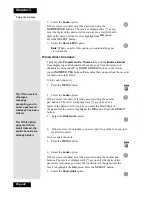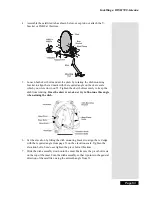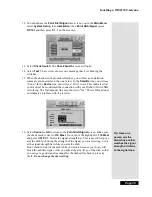
Page 52
Chapter 4
Installation Instructions
Mounting the Dish
1.
Using these azimuth and elevation angles, find a location for the satellite
dish which can be pointed towards the satellites located at these angles.
With a compass, find the required azimuth angle. Then, use the elevation
angle to find out how high the satellites are in the sky from your location.
Make sure nothing blocks the line of sight between the dish and the
satellites.
2.
Mount the mast to a solid surface so that the dish antenna cannot move or be
bumped out of adjustment. Keep in mind that physical and environmental
conditions can block your satellite dish’s ability to receive a clear satellite
signal. The conditions to be aware of are: Eaves and overhangs on your
building or house, wind, plant growth, and deterioration of the mounting
surface. Never mount to a tree.
3.
Align the top part of the mast so that it is absolutely vertical, as shown
below. If the top part of the mast is off vertical by only a few degrees, it will
be difficult or maybe even impossible for you to find the satellites. Take at
least two readings with a bubble level, on the upper mast, that are 90
degrees apart from one another.
NO
YES
Top Part
of Mast
Bubble Level
Mast
Summary of Contents for DP111
Page 21: ...Page 16 Chapter 2 Parts of the System Notes...
Page 75: ...Page 70 Chapter 4 Installation Instructions Notes...
Page 104: ...Page 99 Index Notes...
Page 105: ...Index Page 100 Notes...
















































